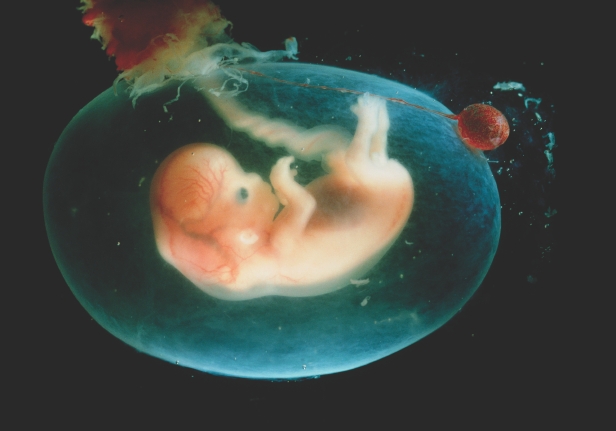FERTILISATION
A man and a woman have sexual intercourse. The man deposits his semen in the woman's vagina. The sperm cells swim into the uterus and up the fallopian tubes, where one of them will fertilise the female egg cell. When a sperm cell joins with an egg cell in the fallopian tube, they form
a new cell called a zygote (click here to watch a video about fertilisation). The zygote that results goes into the uterus. as it travels, it divides many times to form a group of cells called an embryo, and finally it develops into a fetus.
 |
| Zygote at the eight cell stage. Via bbc.co.uk |
 |
| 8 cell embryo at day 3. By ekem, Courtesy: RWJMS IVF Program [Public domain], via Wikimedia Commons. |
 |
| Fetus 3 months. By National Museum of Health and Medicine [Public domain], via Wikimedia Commons. |
PREGNANCY
Pregnancy is the period of time between the fertilisation of an egg cell and the birth of a baby.
The placenta provides the fetus with oxygen and nutrients from the mother's blood. It also takes away carbon dioxide and waste that the fetus produces.
The fetus is connected to the placenta by the umbilical cord.
The amniotic sac contains a liquid called amniotic fluid. This liquid supports
the fetus and protects it.
 |
| Fetus in the amniotic sac, via howitworksdaily.com |
WHAT HAPPENS DURING BIRTH?
During birth (click on the word birth to watch a video) the walls of the uterus start to contract.
Then the cervix gets wider to enable baby to come out of the uterus. Next the
amniotic sac breaks and the contractions push the baby into the vaginal canal.
Once the baby is outside the mother's body he starts to breathe and the doctor cuts the umbilical cord. Finally the amniotic sac, the placenta and the rest of the umbilical cord are expelled.

No comments:
Post a Comment